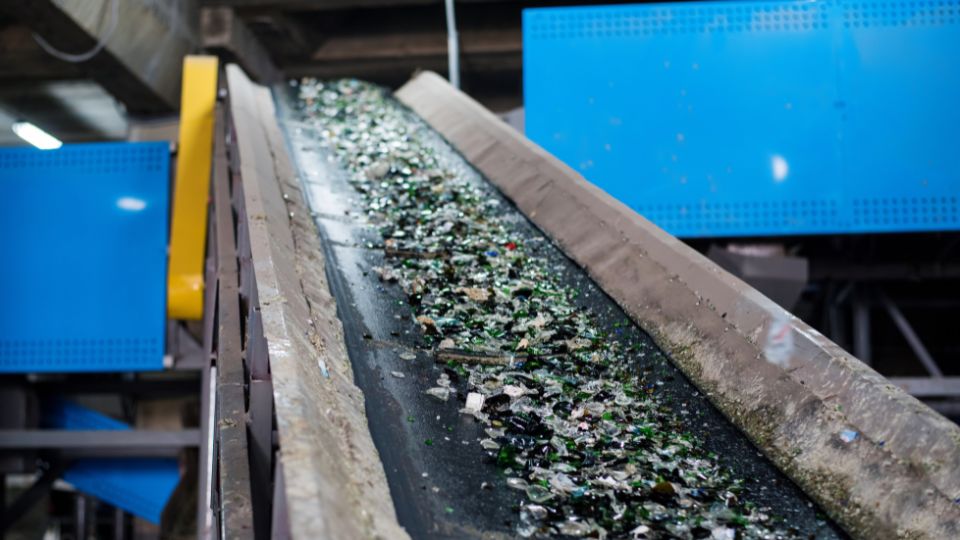
The UK generates a large amount of waste each year, with households alone producing over 26 million tonnes of rubbish annually.
To manage this waste, local councils and waste management companies are responsible for collecting and disposing of rubbish in their areas.
Most councils offer weekly or fortnightly rubbish collection services for non-recyclable waste, along with separate collections for recyclable materials.
Once collected, the rubbish is transported to waste treatment facilities, which can include landfill sites, incineration plants, and recycling centres.
Landfills are often the destination for non-recyclable waste, with over 70% of this waste ending up in landfills in the UK.
However, the government has set targets to reduce the amount of waste sent to landfill and increase recycling rates.
Incineration is another option for waste treatment, which involves burning waste at high temperatures to generate energy.
This method is becoming increasingly popular in the UK, with over 40 incineration plants in operation. However, incineration can be controversial due to concerns about emissions and air pollution.
Recycling rubbish is an important part of waste management in the UK, and councils provide separate collections for materials such as paper, cardboard, glass, plastic, and metal.
Once collected, these materials are sent to recycling centers where they are processed and turned into new products.

The UK government has set a target for 50% of household waste to be recycled by 2024, and this target has been met in recent years.
In addition to traditional waste management methods, the UK has also implemented waste reduction and reuse initiatives.
For example, the plastic bag charge was introduced in 2015, requiring retailers to charge customers for single-use plastic bags.
This has led to a significant reduction in the number of plastic bags used in the UK. But what happens to rubbish in the UK from cafes and restaurants?
The government has also launched campaigns to encourage people to use reusable items, such as coffee cups and water bottles, to reduce waste.
How is waste processed at a treatment facility?
As the world’s population continues to grow, so does the amount of waste we generate.
Proper waste management is critical to protecting the environment and public health, and one key component of waste management is waste processing at treatment facilities.
These facilities are designed to separate, treat, and dispose of different types of waste materials in a safe and environmentally responsible manner.
Collection
The first step in the waste processing process is collection. Waste is collected from homes, businesses, and other sources and transported to the treatment facility.
Collection methods can vary, but what usually happens to rubbish is the following, waste is moved by kerbside collection, drop-off centres, and transfer stations.
Pre-Treatment
Once the waste arrives at the facility, it undergoes pre-treatment. This step involves sorting the waste to remove any large items or materials that could damage processing equipment or cause safety hazards. The waste is then shredded or ground up to make it easier to handle.
Screening
After pre-treatment, the waste is screened to remove any remaining large materials and to separate out organic matter, such as food waste, from inorganic materials, such as plastics and metals. This step is critical to ensuring that the waste is properly processed and recycled or disposed of.
Biological Treatment
Organic matter is processed through biological treatment methods such as composting, anaerobic digestion, or other methods to break it down into stable materials that can be used as soil amendments.
Composting is a natural process that involves breaking down organic waste using microorganisms and oxygen.
Anaerobic digestion is a process that involves breaking down organic waste in the absence of oxygen. Both of these methods result in a product that can be used as fertiliser or soil amendment.
Physical and Chemical Treatment
Inorganic materials are processed through physical and chemical methods such as sorting, shredding, grinding, and heating to separate them into recyclable and non-recyclable materials.
This step is critical to ensuring that materials are properly recycled and do not end up in landfills.
Recyclable materials such as plastic, metal, and paper are sent to recycling facilities where they are processed into new products.
Recycling
Recycling is a key component of waste processing at a treatment facility. Recycling conserves natural resources and reduces the amount of waste that ends up in landfills.
At the treatment facility, recyclable materials are sorted and processed into new products. For example, plastic bottles can be recycled into new plastic bottles or other products such as clothing or furniture.

Landfilling
Non-recyclable waste materials that cannot be reused or recycled are sent to landfills for disposal. Landfills are designed to contain waste and prevent contamination of the surrounding environment.
Modern landfills are designed with liners and other systems to prevent leakage of contaminants into the soil and groundwater.
Environmental and Safety Regulations
Throughout the waste processing process, various environmental and safety regulations are followed to ensure that the waste is handled and processed safely and efficiently.
These regulations cover everything from the design and operation of the facility to the handling and disposal of hazardous waste. Waste processing facilities are subject to regular inspections and audits to ensure that they are in compliance with regulations.
The Bin Size Calculator
Conclusion
Waste processing at a treatment facility is an important component of waste management.
It involves separating, treating, and disposing of different types of waste materials in a safe and environmentally responsible manner.
Proper waste processing helps to conserve natural resources, reduce pollution, and protect public health.
As the world’s population continues to grow, waste processing facilities will play an increasingly important role in ensuring that waste is managed in a sustainable manner.








